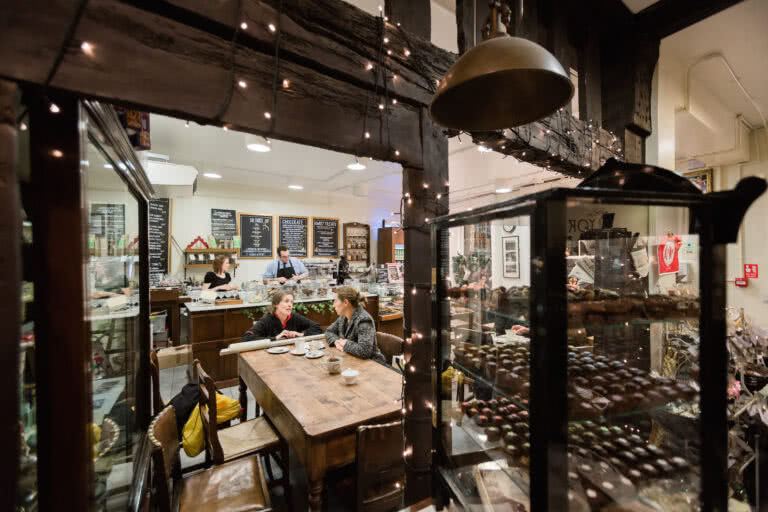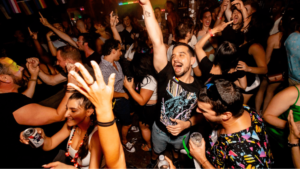It doesn’t matter how amazing your food is — your next food event needs to go beyond pleasing people’s taste buds.
You can only sit in the same booth and order the same main from the same menu so many times before boredom hits you. That’s one of many reasons why pop-up restaurants are increasing in popularity.
Did you know that almost 30% of British businesses begin their entrepreneurial journey as a pop-up?
With a pop-up, you can expose your guests to different elements — immersing them in new locations, themes, flavours, and concepts.
But what is a pop-up restaurant, and how do you market one?
Event organisers worldwide use Eventbrite to plan, sell, and promote their innovative and mouth-watering pop-up restaurants — and we want to show you how it’s done.
Get inspired with our best pro tips on how to sell and market your pop-up restaurant, and get all the inspiration you need from awesome examples of success stories.
HOW TO MARKET AND PROMOTE YOUR POP UP RESTAURANT
#1. Create a sense of exclusivity with an annual pop-up event
#2. Tap into communities with themed pop-up events
#3. Use advanced targeting to reach the right audience
#4. Collaborate with food and drink influencers
#5. Continue promoting your event on the day
How do pop-up restaurants work?
Pop-ups are really hot right now, with the industry worth over £2.3 billion a year in the UK alone.
So why are pop-up restaurants in such high demand right now? And, more importantly, how do you set one up? Let’s take a quick look.
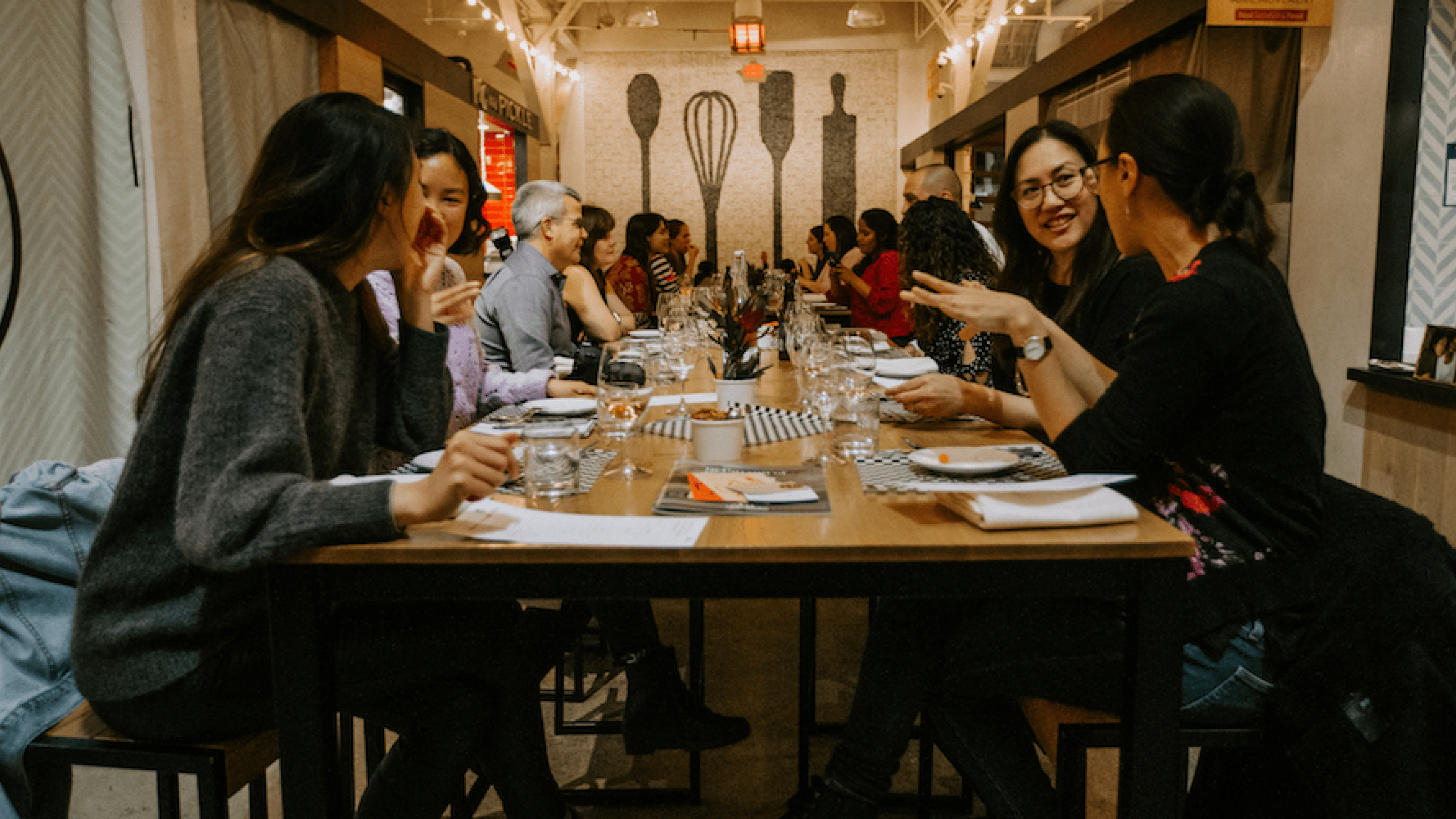
What is a pop-up kitchen?
So, what is a pop-up restaurant vs a pop-up kitchen? There’s no real difference. They’re both a limited-run dining experience. Chefs will often set up a pop-up in an event space on a short-term basis to trial new concepts or menu ideas.
Setting up a permanent restaurant is a big investment. By striking a short-term deal with an event space, pop-up chefs can see how diners digest the concept before going all-in.
Your event attendees are after unique experiences — including the menu, venue, and customer experience. And nothing is more unique than temporary restaurants that might not be around tomorrow. This creates a more memorable dining experience that guests will love.
Pop-ups also build a sense of FOMO (fear of missing out) due to their short lifespan. If you’re running a great pop-up, diners want to sample your menu as quickly as they can.
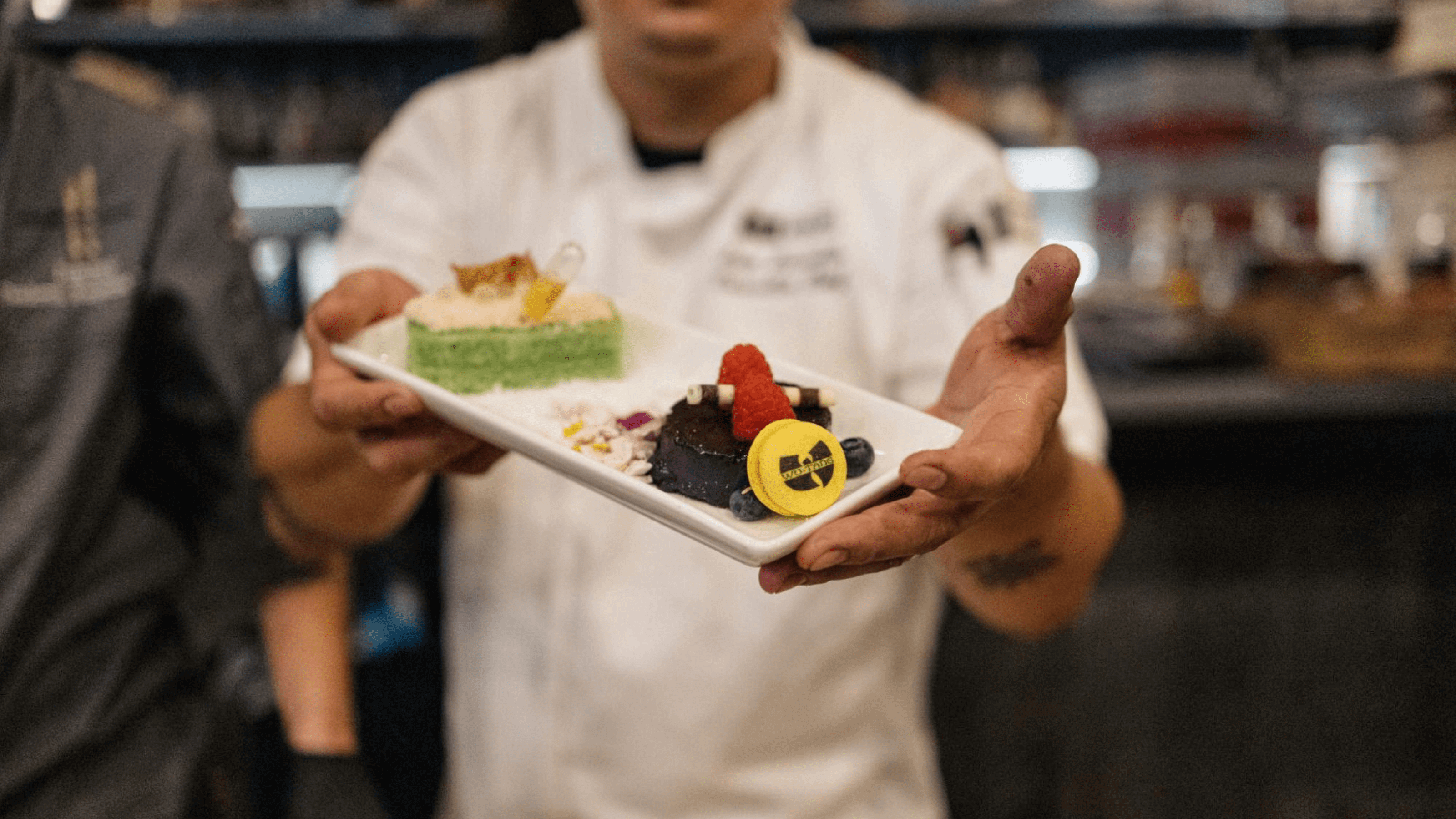
How to start your own pop-up restaurant
Opening a pop-up restaurant is pretty similar to setting up any event. You’ve just got to frame your goals, prep, and operations a little differently to match your pop-up’s temporary status.
1. Develop your pop-up concept: What’s your restaurant concept, and how is it different from a traditional restaurant?
2. Create goals for your pop-up: Are you trying to generate a certain amount of revenue, raise your chef’s profile, or test out a new menu?
3. Work out your pop-up budget: How much does it cost to open a pop-up restaurant? The answer depends on a variety of factors — so make sure you understand your requirements and use an event budget template.
4. Arrange a venue for your pop-up: You could strike a short-term let agreement with an event space, collaborate with an existing venue, or set up a food truck in a popular part of town.
5. Secure any necessary licenses, permits, and insurance coverage: Depending on where your pop-up is and what you’re selling, you’ll need to check with your local authority to find out what requirements you must fulfill. For example, you might need a temporary alcohol licence if you’re serving drinks.
6. Secure staff for your pop-up: Hire and train your event team to ensure you fully take care of your guests when they visit.
7. Create an event page and sell event tickets to your pop-up: Nobody will find your pop-up unless you give it a home on the web where people can learn more and share it with friends.
8. Promote and market your pop-up: To make sure you achieve your goals, you’ve got to get the word out to your target audience.
After you’ve welcomed plenty of hungry customers and have reached the end of your pop-up run, crunch the numbers to assess whether you achieved your goals.
That’s where it pays to partner with a solution like Eventbrite.
With Eventbrite, you’re able to create an event page and sell tickets — and you can also manage your event marketing, check your guests in on the day, and then use the data you’ve collected to create custom reports that demonstrate your event success.
How to market and promote a pop-up restaurant event
A successful pop-up restaurant hinges upon your ability to get the word out to potential customers. So, you need to consider an event marketing plan and what differentiates your pop-up from everyone else in the restaurant industry.
That’s why we’ve rounded up five pro marketing tips that are guaranteed to help get your new food business noticed.
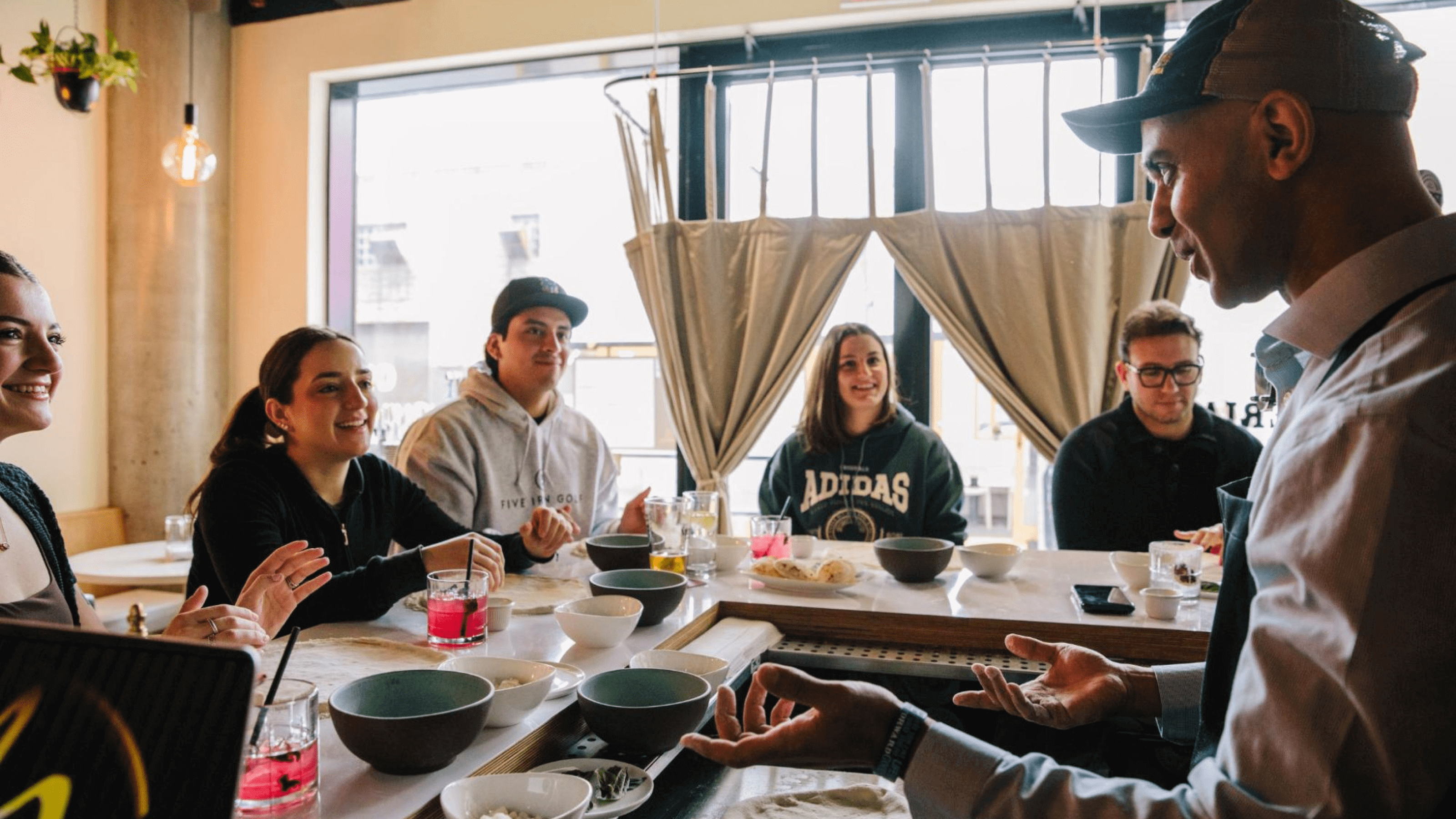
#1. Create a sense of exclusivity with an annual pop-up event
The temporary nature of a pop-up creates a sense of rarity. Use that to your advantage by promoting your pop-up as a once-in-a-year chance to try out fun food concepts guests won’t find anywhere else.
You can also make your event seem more special by linking it to a holiday. That’s what Newcastle-based The Small Canteen is doing at The Small Canteen x popup at The Old School Gallery for the upcoming bank holiday.
💡Pro tip: You can even create different levels of exclusiveness within your pop-up. By partnering with Eventbrite, you can create multiple ticket classes so you’re able to offer a VIP experience for some of your pop-up guests.
#2. Tap into communities with themed pop-up events
One of the best ways to fill your pop-up is by tapping into communities that are inherently more interested in your concept.
For lessons in best practice, look at the Only Food and Courses – Pop-up. Event organiser and chef Robbie Lorraine taps into food nostalgia, taking guests back to the 80s and 90s with his unique and entertaining take on British food and pop culture. It lets attendees share their interests in British culture and memories while enjoying delicious food.
In terms of event marketing, that makes targeting your audience easier on social media. But it also supports your content by giving you a really clear and obvious selling proposition by pitching a themed idea to an in-built community.
💡Pro tip: If you’re going to build your event around an existing community, authenticity is crucial. So before you start planning an event around your themed pop-up, check out similar community events on Eventbrite to connect with like-minded event organisers and venues and learn more.
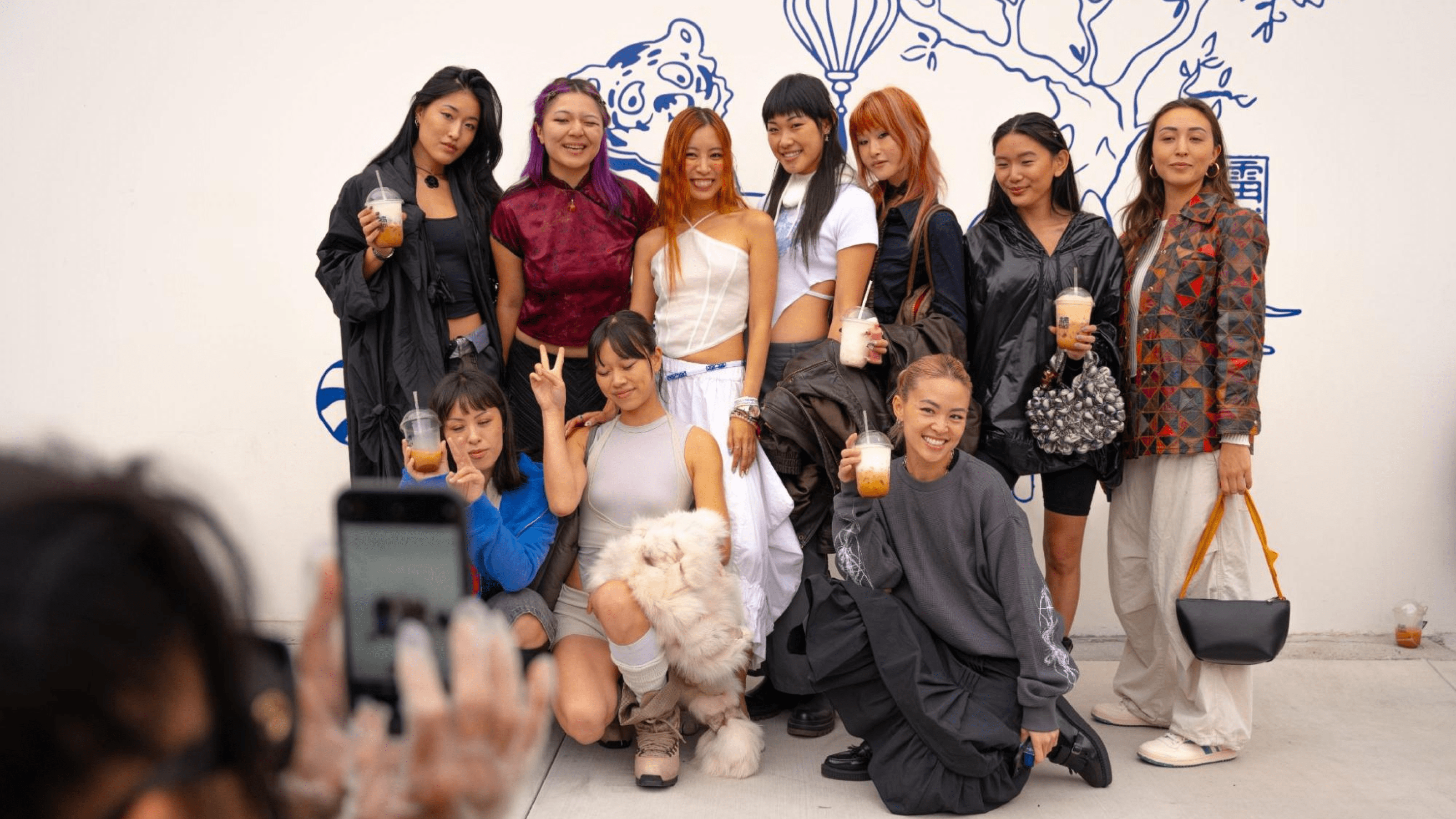
#3. Use advanced targeting to reach the right audience
Due to the limited nature of your pop-up, you need to make sure you’re reaching your potential guests as quickly and cheaply as possible. That’s where targeted advertising comes in handy.
With Eventbrite’s marketing tools, you can optimise your social media content and email marketing activities by A/B testing and pre-scheduling your posts to upload at the perfect times.
That’s how event organiser MAMA’s Nightmarket managed to kickstart a 92% growth in sales.
You’ll even benefit from advanced features like retargeting so your pop-up ads can “follow” interested users who might’ve visited your event page but didn’t end up buying tickets.
💡Pro tip: If you’re not sure how to word your content to appeal to potential guests, try using AI-generated social media content to get the creative juices flowing and boost your next campaign.
#4. Collaborate with food and drink influencers
Setting up shop in an unusual location is a great way to get people talking about your pop-up — but sometimes your temporary location is less important to your audience than knowing who your pop-up chef is.
What is a pop-up chef?
Simply put, your chef is the person responsible for turning your vision into a tasty event people will love. That’s why it makes sense to team up with pop-up chefs already operating as influencers in the food and drink space.
This enables you to leverage their existing following to expand your reach — not to mention influencers, which give your event an added layer of trust and authenticity.
💡Pro tip: If you’re working with an influencer in the food industry, make the most of your collaboration on social media by tagging their profiles in sponsored posts, for example.
With a platform like Eventbrite’s marketing tools, you’ll have full visibility on all your marketing efforts at all times — making it possible to position your influencer front and centre.
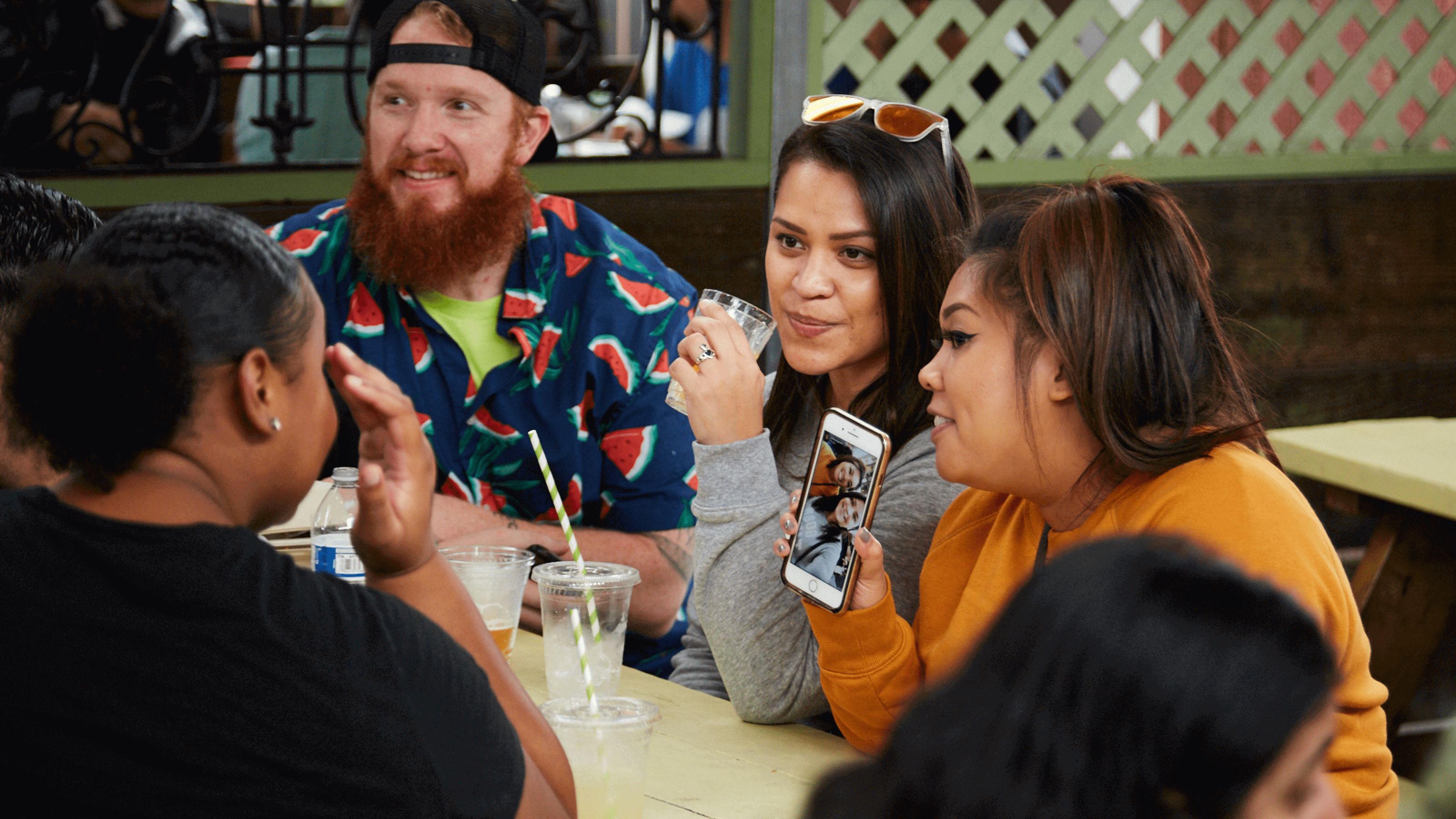
#5. Continue promoting your event on the day
Some organisers think their event marketing plan is over once all the tickets are sold, but you should continue promoting your pop-up even after you’ve opened up your doors.
By promoting your pop-up on the day, you’ll generate FOMO and demonstrate to followers who didn’t buy tickets why they need to attend your next pop-up.
By showing off the amazing food menu your followers are missing out on, you’ll tempt potential guests into checking out upcoming dates and events.
💡Pro tip: People love and trust user-generated content. Encourage diners to capture shareable photos and reels at your event that’ll expand your reach. A great way to do that is to set up a photo booth or create a unique event hashtag that guests can use in their posts.
Let’s get poppin’
Pop-ups are a great starting point for anyone looking to get into the food and drinks business. It doesn’t matter whether you’ve got an unusual location in mind or are simply looking for a way to reduce restaurant costs.
By working with pop-up food vendors to create unique, one-off experiences, you’ll be able to meet your goals and tap into a new market. Just remember to consider your marketing strategy and partner with a platform that can help you achieve more bang for your buck.
That’s where Eventbrite comes in.
